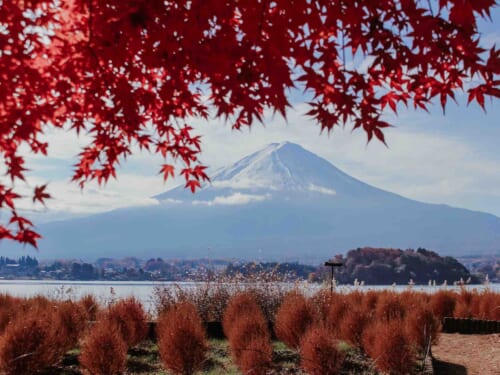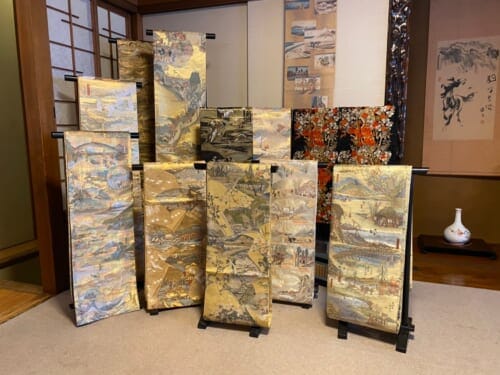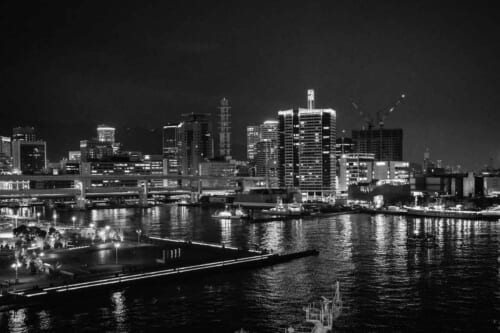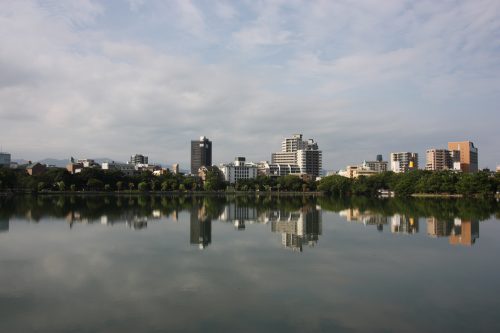Anyone who has experienced an earthquake in Japan knows that most tremors are brief, barely noticeable and last only a few seconds. With approximately 5,000 minor earthquakes recorded annually — over half measuring between 3.0 and 3.9 on the Richter scale — many go undetected by residents and visitors alike. However, Japan also faces about 160 earthquakes each year with magnitudes of 5.0 or higher, causing noticeable shaking across the archipelago.
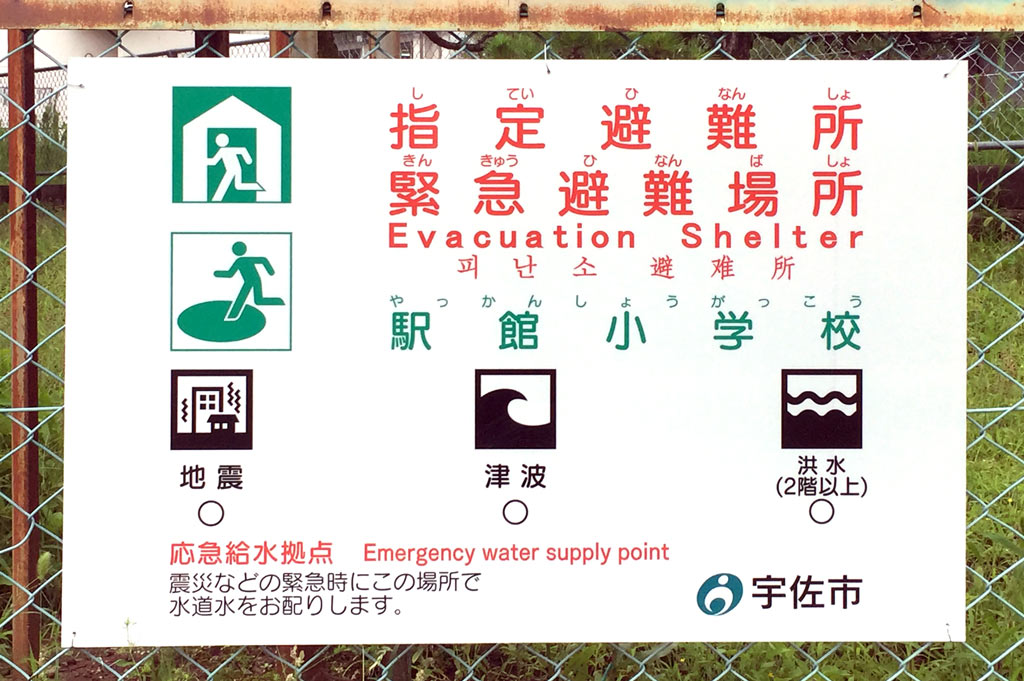
As a country located on the Pacific Ring of Fire, Japan’s seismic activity highlights the importance of understanding earthquake preparedness for anyone visiting or living in this earthquake-prone region.
How Often Does Japan Have Earthquakes?
Most of Japan’s 5,000 earthquakes go unnoticed due to its low magnitude rating, or because the hypocenter (the point where an earthquake ruptures below the surface of the Earth) is far from the coast of Japan. About 3,800 earthquakes with a recording of 3.0 – 3.9 occur per year and around 900 with a magnitude of 4.0 – 4.9.
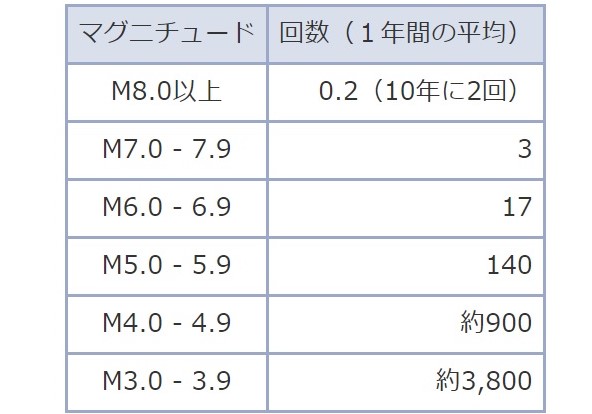
Why Does Japan Have so Many Earthquakes?
Japan’s high number of earthquakes is due to its geographical location along the Pacific Ring of Fire 環太平洋火山帯 (kantaiheiyoukazantai). This 40,000 km long chain consists of at least 450 volcanoes. In Japan alone, there are around 265 volcanoes classified as potentially active.
Japan overlaps the four continental plates — the Pacific, the Philippine, the Eurasian, and the North American plate. Here, the plates slide over liquid rock and cause tension, which is eventually released and expressed as earthquakes.
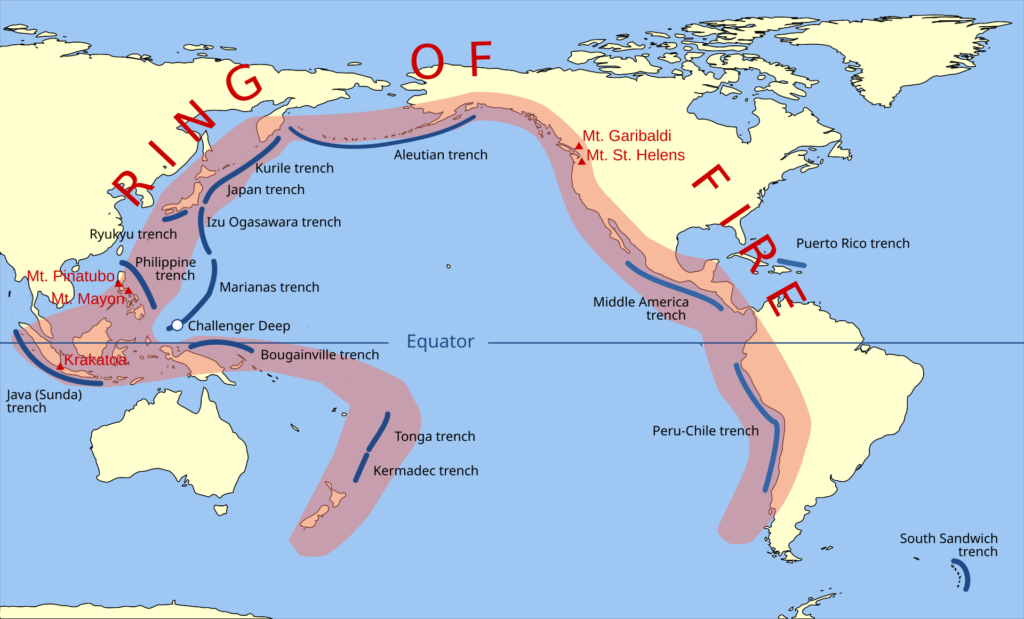
In addition to the clash of the continental plates, the Japan Trench is another cause of Japan’s numerous earthquakes. The Japan Trench is an 800-meter-long deep oceanic trench in the northwestern part of the Pacific, with a depth of 8,410 meters. In 2006, seismically active volcanoes with a height of 50 meters were discovered 5,000 meters within the trench and are believed to be responsible for the Tohoku earthquake and tsunami of March 2011.
What to do in the Event of an Earthquake
What if an unexpectedly intense earthquake occurs while you are in Japan? If you are indoors, seek shelter under a stable table or door frame and stay away from anything that could fall on you. If you are outside, find an open area away from trees, machines, and buildings.
For specific details on where to get information in English, find help, and what to do during an emergency, see our guide to getting help in Japan during disasters, medical problems, or crimes.
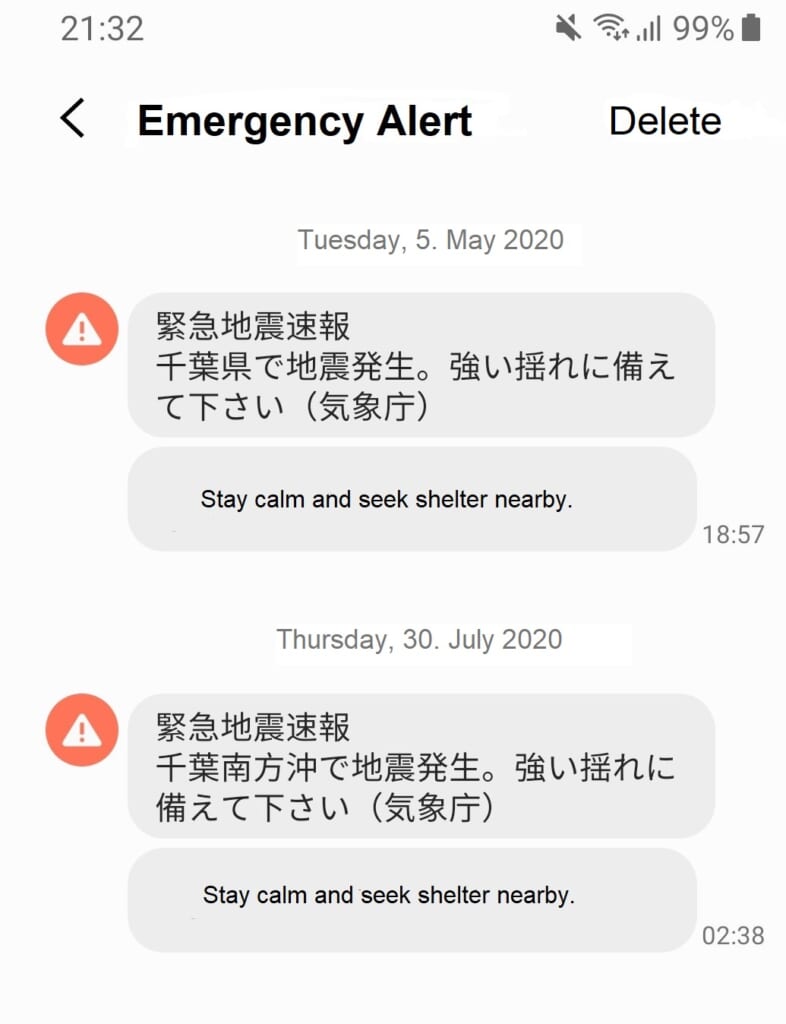
Also, pay attention to announcements or warnings made from loudspeakers in most cities and towns in Japan. If you have a phone with a Japanese phone number, you will receive a notification to your smartphone. This extends to users with data-only SIM cards as well. For more information about apps or websites with English disaster information, please check our guide to getting help in Japan.
The Most Significant Earthquakes in Japanese History
In Japan’s history, several earthquakes with a 7.0 or stronger have resulted in many victims and destruction in its wake. Some of the most destructive earthquakes occurred almost a century ago, while others happened in the recent past.
The Great Kanto Earthquake of 1923
On September 1, 1923, an earthquake with a magnitude of 7.9 hit the Kanto region and destroyed most of Tokyo and Yokohama. With more than 100,000 deaths, the Great Kanto Earthquake 関東大震災 (kanto daishinsai) went down as one of the most destructive earthquakes in Japan’s history. The aftermath also triggered a massive city fire, and casualties rose to over 140,000.

The earthquake not only led to major fires in the metropolitan region but also resulted in a 12-meter-high tsunami wave that hit Sagami Bay. The bay, located in the south of Kanagawa Prefecture, was also the hypocenter of the earthquake, and the landmasses of the bay shifted two meters upwards during the quake.
The Kobe Earthquake of 1995
On January 17, 1995, an earthquake with a magnitude of 7.3 hit the city of Kobe. Over 4,500 people died during the Kobe Earthquake, also known as the Hanshin-Awaji Earthquake disaster 阪神・淡路大震災 (Hanshin Awaji daishinsai). The earthquake’s hypocenter occurred 20 km southwest of Kobe’s city center, 16 km below the Earth’s surface.
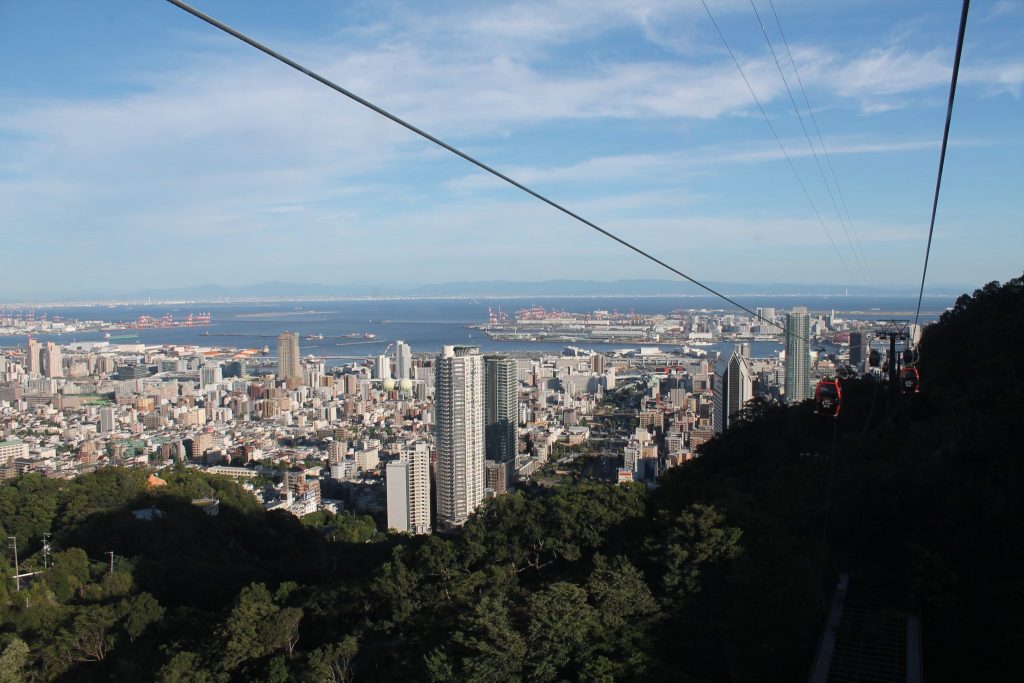
As with the Great Kanto Earthquake, the Kobe Earthquake’s force was apparent on a geographical scale: The Akashi Kaikyo Bridge 明石海峡大橋, which today connects the main island of Honshu with Awaji Island (淡路島), was still under construction in 1995. After the force of the Kobe Earthquake, the bridge’s piers moved almost a meter apart.
Nowadays, Japan celebrates January 17 as Disaster Response Volunteer Day. In addition, the Kobe Luminarie is held in Kobe every December to commemorate the victims of the earthquake.
The Tohoku Earthquake and Tsunami of 2011
The Tohoku earthquake and tsunami 東日本大震災 (Higashi-Nihon daishinsai) occurred on March 11, 2011. With a magnitude of 9.1, this earthquake is the strongest ever recorded in Japan. The ocean megathrust earthquake occurred off the Sanriku coast by Miyagi Prefecture, about 130 km east of Sendai and 370 km northeast of Tokyo.
The 23-meter-high tsunami wave triggered by the earthquake flooded over 500 km² of the Japanese Pacific coastline. The nuclear disaster at the Fukushima nuclear power plant gave the Tohoku Earthquake the nickname “triple catastrophe.”
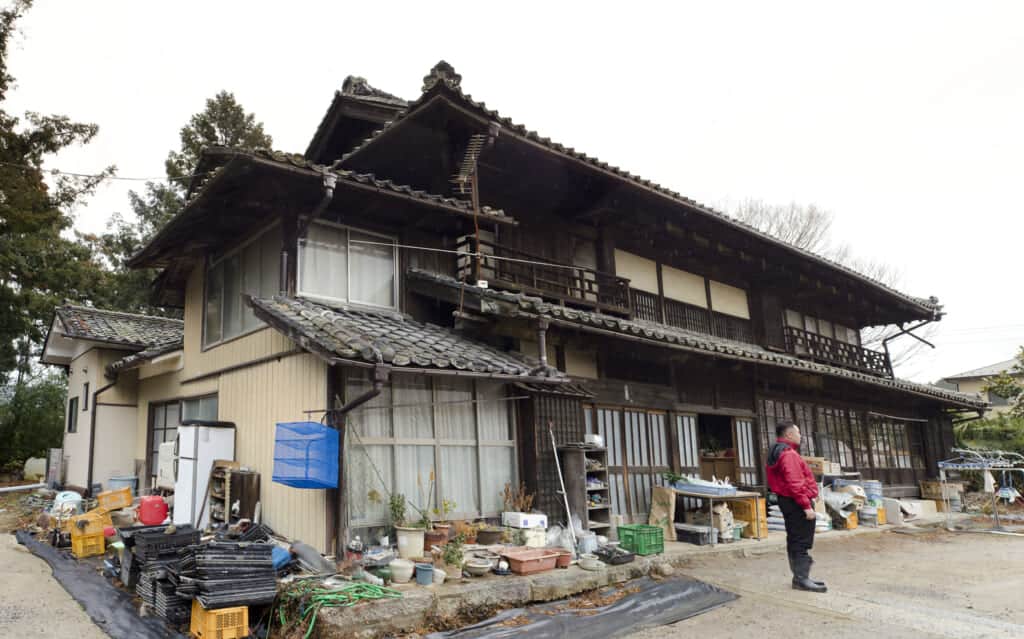
According to the current status of June 2020, 15,899 people died in the triple disaster, and 2,529 are still missing today. The destruction and nuclear disaster forced almost half a million people to leave their apartments and houses.
Just as the Kanto and Kobe earthquakes had, the Tohoku earthquake and tsunami altered the plate tectonics. The main island of Honshu shifted 2.4 meters to the east, and the Oshika peninsula in Miyagi Prefecture sank by 120 cm. In the days and weeks after the disaster, around 500 earthquakes with a magnitude of 5.0 to 7.0 have been recorded.
Earthquakes are something to expect at any time of the day in Japan but don’t worry. Most modern Japanese buildings have earthquake-proof construction of cushioned pillars anchored in massive concrete foundations. That will ensure getting through unscathed during such an event in Japan. For more details on what to do during an emergency, such as an earthquake, see our guide to help Japan during disasters, medical problems, or crimes. Enjoy your trip to Japan!
